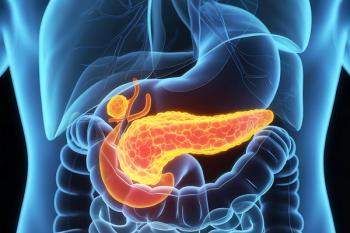
- Special Issues-05-01-2007
- Volume 0
- Issue 0
Corporate Retrospective 2007: Bruker
We are pleased indeed to have been partnering with LCGC for North America many years in briefing scientists worldwide about our numerous LC–MS product announcements and extensive LC–MS applications news.
We are pleased indeed to have been partnering with LCGC for North America many years in briefing scientists worldwide about our numerous LC–MS product announcements and extensive LC–MS applications news. We find LCGC application notes to be a great tool to inform scientists about the very latest technological advances. LCGC has a well-informed readership that understands the research implications of our novel new LC–MS capabilities. LCGC application notes are an excellent way for us to provide the scientific community with real world data. In addition, we find that our advertisements in LCGC are well received by scientists, often generating requests to visit our worldwide demonstration labs to test out our newest instruments with their most challenging real world samples.
We consider LCGC to be an ideal medium for communicating news on all our MS capabilities.
Two years ago, we introduced the world's first high-capacity ion trap with electron transfer dissociation (ETD) capability. Last year at Pittcon 2006, our newly announced post-translational modification methods further extended our customers' ability to achieve automated, intelligent phosphorylation, and glycosylation characterization. The announcement enabled this important branch of proteomics on our robust, ultra-high sensitivity ion traps, and further established Bruker Daltonics as the leader in PTM research, ETD, and proteomics research by mass spectrometry. LCGC application notes are our vehicle of choice for communicating this kind of scientific advance.
In combination with the exceptional performance of our mass spectrometers in acquisition speed, mass accuracy, speed, and conventional collision induced dissociation, Bruker's advanced ETD technology has been opening the door for many of our customers worldwide to easily access the type and location of various PTMs, both quickly and conveniently. Our customers are finding that ETD fragmentation of large peptides results in a very complete set of c-and z-fragments due to the random fragmentation of all N-Cα bonds. These customers are seeing that the Bruker ETD takes full advantage of the excellent mass accuracy of the ion trap, making it the ideal tool for de novo sequencing applications. We'll publish more application notes on these kinds of topics in all the European, North American, and Asia-Pacific LCGC editions on a regular basis.
Clive Seymour
Clive Seymour
Vice President for Asia-Pacific
Bruker Daltonics
Bremen, Germany
Articles in this issue
over 18 years ago
Corporate Retrospective 2007: ACD Labsover 18 years ago
Corporate Retrospective 2007: CDS Analyticalover 18 years ago
Corporate Retrospective 2007: ESAover 18 years ago
Corporate Retrospective 2007: Peak Scientificover 18 years ago
Looking back at 25 Years of LCGCover 18 years ago
Corporate Retrospective 2007: Tosohover 18 years ago
Corporate Retrospective 2007: Milliporeover 18 years ago
Corporate Retrospective 2007: Pickeringover 18 years ago
Corporate Retrospective 2007: GilsonNewsletter
Join the global community of analytical scientists who trust LCGC for insights on the latest techniques, trends, and expert solutions in chromatography.





